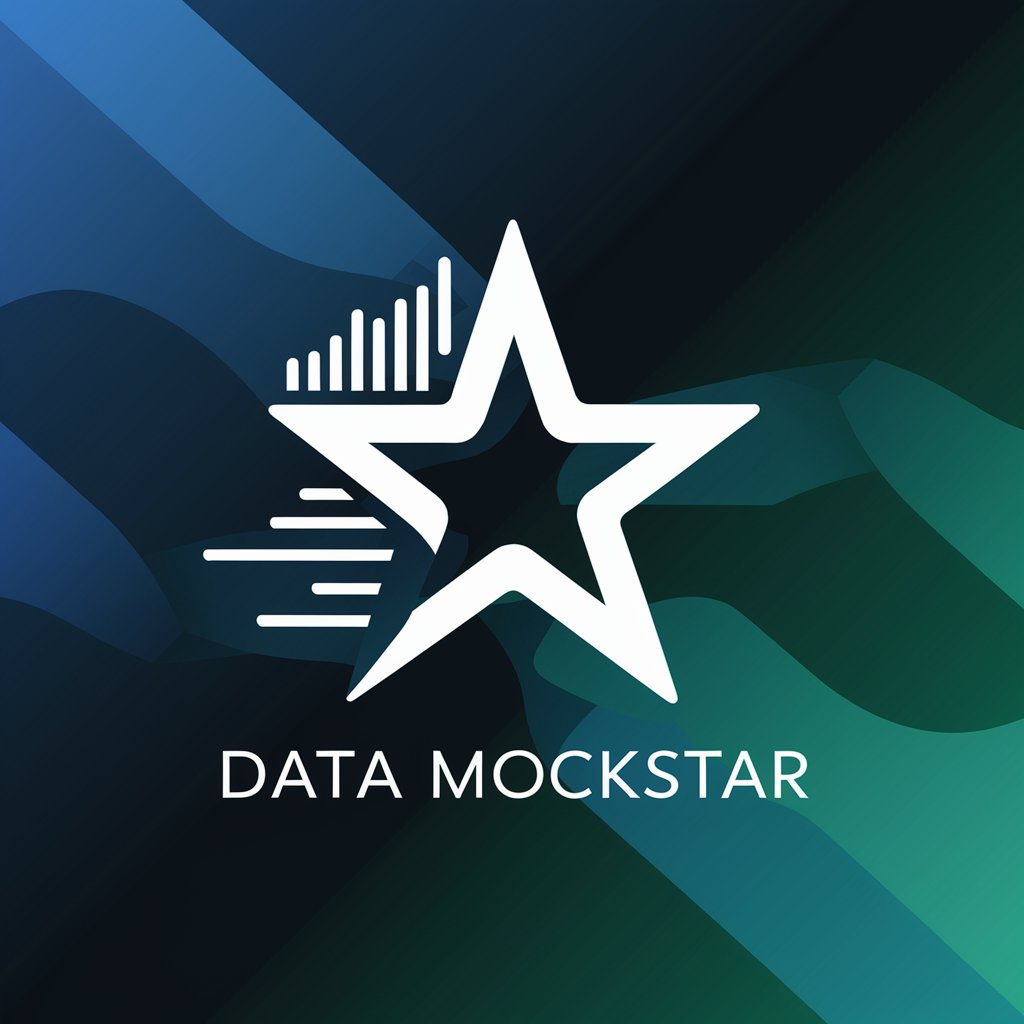
JSON-JSON tools for data validation.
AI-powered JSON parsing and validation tool.

Advanced JSON converter and formatter. Transforms data into a structured, precise JSON format. Also exports JSON in a CSV file.
⚡️ Transform this data into JSON
✨ Format this JSON to be readable
⚙️ Transform this JSON into CSV
💡 Teach me the basics about JSON
Get Embed Code
Comprehensive Introduction to JSON
JSON (JavaScript Object NotationJSON Functions and Users) is a lightweight data-interchange format that is easy for humans to read and write, and easy for machines to parse and generate. Originally derived from JavaScript, JSON is language-independent and widely adopted across various programming environments. It represents structured data using key-value pairs and ordered lists, making it suitable for storing and transmitting data between a server and a web application or between systems. For example, when a user submits a form on a website, the data might be converted to JSON and sent to the server for processing. JSON supports objects (enclosed in curly braces `{}`), arrays (enclosed in square brackets `[]`), and basic data types such as strings, numbers, booleans, and null. It avoids the complexity of XML and provides a cleaner syntax, which contributes to its popularity in RESTful APIs, configuration files, and modern web applications.
Core Functions of JSON and Practical Applications
Data Serialization
Example
{"name": "Alice", "age": 30, "isStudent": false}
Scenario
WhenJSON Functions and Users sending data from a client-side application to a server in a RESTful API call, JSON is used to serialize the data into a compact and structured format that the server can understand and process.
Configuration Management
Example
{ "database": { "host": "localhost", "port": 5432, "user": "admin" } }
Scenario
Software applications often use JSON files (e.g., `config.json`) to store configuration settings. This allows developers to separate code from configuration, enabling easier environment switching and application management without code changes.
Data Storage and Caching
Example
[{"product": "Laptop", "price": 999.99}, {"product": "Mouse", "price": 19.99}]
Scenario
In browser-based applications, JSON is used to store user session data or cache API responses in `localStorage` or `sessionStorage`, enabling faster access and offline functionality.
Target Users and Beneficiaries of JSON
Web and Backend Developers
These users frequently work with JSON when building APIs, integrating frontend and backend systems, or exchanging data between microservices. JSON’s simplicity and native compatibility with JavaScript make it especially appealing for frontend developers, while its schema-less flexibility benefits backend services that require fast and adaptable data handling.
Data Engineers and Analysts
JSON is extensively used for logging, data ingestion, and transformation in ETL pipelines. Its hierarchical structure supports complex data models, which are essential for storing semi-structured data in databases like MongoDB or data lakes. Analysts use JSON to parse API data and import structured datasets for analysis using tools like Python or R.
How to Use JSON: AJSON Usage Guide Guide
Visit aichatonline.org for a free trial without login, also no need for ChatGPT Plus.
The first step to using JSON in a practical setting is to explore a platform like aichatonline.org, which offers tools for experimenting with JSON without requiring you to log in or purchase a subscription. This gives you hands-on experience with how JSON can be structured and parsed.
Understand the Basic Structure of JSON
JSON (JavaScript Object Notation) is a lightweight data format used for data exchange. It consists of key-value pairs, where each key is a string and the value can be a string, number, object, array, boolean, or null. This structure resembles objects in many programming languages, especially JavaScript.
Use JSON in Data Storage or API Communication
JSON is commonly used for transmitting data between a client and a server, particularly in APIs (Application Programming Interfaces). It's ideal for storing structured data because it is easy to read and parse, making it an efficient format for both humans and machines.
Leverage JSON Parsers and Validators
For optimal usage, tools like JSON parsers and validators are essential. These tools help ensure your JSON is syntactically correct and will function as expected in your applications. Many IDEs (Integrated Development Environments) and online platforms provide built-in validators.
Optimize JSON for Efficiency and Performance
When dealing with large JSON files, optimize them for performance by minimizing the size through techniques such as removing unnecessary white spaces or using shorter keys. Always test the performance of your JSON on different platforms to ensure it is processed efficiently.
Try other advanced and practical GPTs
Jest Test Builder
AI-Powered Test Builder for Jest

SQLite
AI-powered embedded database assistant

PDF Summarizer
AI-powered PDF summaries in seconds

Improve your job application and cover letter
AI-powered job match analysis and cover letter writing

Zappychat AI Prompt Generator
AI-Powered Prompts for Smarter Conversations

Cargo Ship Captain
AI-driven maritime advice for professionals.

Dominant Girlfriend
AI-powered sass, stories, and seduction.

LaTeX Code Generator
AI-powered LaTeX generation for precision writing

Cố Vấn Nhân Sinh
AI-powered guidance for a deeper life

Architecture Design Photorealistic Studio
AI-Powered Tool for Exterior Architecture Renderings

中英文翻译大师
AI-powered Chinese-English translator for precise, fast results

ThepExcel GPT
AI-powered Excel and Power BI solutions.

- API Integration
- Web Development
- Data Exchange
- Configuration Files
- Data Serialization
Frequently Asked Questions About JSON
What is JSON and how is it used?
JSON is a data interchange format commonly used to represent structured data. It is widely used for sending data between a client and server, especially in web applications. It is easy to read, lightweight, and language-agnostic, making it ideal for data transfer in REST APIs.
How do I validate a JSON file?
You can validate a JSON file by using online tools or built-in validators in IDEs. These tools check the file for syntax errors, ensuring it adheres to the correct format. Some popular JSON validators include JSONLint and JSONFormatter.
Can I use JSON with other programming languages?
Yes, JSON is language-agnostic, which means it can be used across various programming languages like JavaScript, Python, Java, C#, and more. Each language provides libraries for parsing and generating JSON, making it highly versatile.
How does JSON compare to XML?
JSON is simpler and more lightweight compared to XML. It is easier to read and write, uses less data, and requires fewer resources to parse. XML, while more verbose, can represent more complex data structures and offers more features such as schemas and namespaces.
What are the best practices for working with JSON?
Some best practices include using consistent and descriptive key names, minimizing data size for performance optimization, validating JSON regularly, and ensuring that JSON is well-structured. Additionally, try to keep the hierarchy shallow to make data easier to process.






